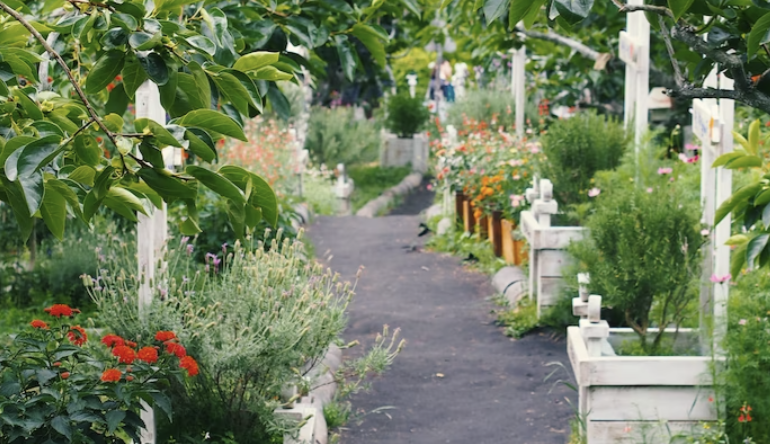NEWS
Planting For Beginners: 5 Tips To Green Up Your Thumb

Planting is one of the most rewarding activities people can do. Apart from helping improve the air quality and beautifying the environment, it also prevents soil erosion. In addition, planting allows a person to exercise physically and mentally. It can also increase a property’s value, paving the way for possible financial gains.
Suppose you’re planning to plant for the first time. In that case, you may consider knowing various gardening tips for beginners. This way, you’d see what you need and the materials to prepare. This helps you cope with this newfound hobby and make the most of it. For that purpose, here’s a helpful guide for beginners:
1. Choose A Location
Choosing the location for your first plants includes considering the site’s soil conditions, accessibility, and sun exposure. In considering its soil condition, you must select the type composed of balanced clay, sand, and silt. In many cases, it can hold water and drain moisture well.
When considering accessibility, you must choose a location close to your house. This way, you can quickly go to and from your home whenever you need gardening materials. Apart from this, the site should also be accessible to a vehicle so that it’d be manageable to deliver gardening supplies such as compost.
When considering sun exposure, the site should have at least 8 hours of direct sunlight. If you’re planning to plant seedlings that don’t require much sunlight, you may allot a portion of the site for a sheltered garden. Still, the location should be free from excessive shades. If you’re planning to plant in pots, consider buying portable garden tables you may move around for sunlight exposure and shade.
2. Start With Easy-To-Grow Plants
Choosing your first plants increases the chance of having a high garden yield. This way, your plants only need basic gardening skills such as container gardening and composting to thrive. For this purpose, you may check the following easy-to-grow plants:
- Peppers
Peppers are some of the easiest to grow since they’re not pest-prone and don’t need special care. In raising these plants, one must only do the routinary watering, weeding, and mulching.
- Radishes
Radishes only need 25-30 days before harvest. Because of this, beginning gardeners need a short time setting up their needs from water to sunlight to fertilizer.
- Tomatoes
Most tomatoes are disease-resistant and thrive during most seasons. In addition, they can produce bunches if taken care of properly. The only thing that tomatoes may require is a plant support or cage as they tend to fall off when the fruits become heavy.
- Pole Beans
Aside from the trellis needed to support these vines, you only need some watering and cultivating routines for these plants to thrive. What makes this more impressive is that it usually produces numerous crops.
3. Stay Close To Water
An excellent water source is necessary for gardening. It provides the required moisture to the plants and gives the moisture that the soil needs. You may install a garden hose so that you can maximize the coverage of the water source.
This installation will also help you maximize your time and eliminate the need to lug water every time your plants need it. You may install a suitable sprayer attachment for well-spreading watering or a reliable sprinkler system for the best results.
4. Enrich The Soil
If you want to enrich your garden soil easily, you can buy ready-to-use compost from gardening supply stores. If you’re going to make your own, mix dry leaves, animal manure, non-animal food scraps, and water. Place the mixture inside a container and keep it sealed for 2-3 days.
Then, you can pour a generous amount of compost into your garden soil. You may also add mulch to improve your soil’s texture and porosity. Mulch is placed on top of the garden to improve its nutrients and prevent weed growth. Mulching can be organic, composed of grass clippings or bark, or inorganic such as plastic sheets.
5. Buy The Basic Tools
The essential gardening tools help people in their day-to-day planting activities. Here are some gardening tools you may start with:
- Trowel
Gardeners use this tool not just in taking out weeds but also in transplanting seedlings. Apart from this, they’re also used in cultivating garden beds.
- Rakes
These tools suit for removing dry leaves, grass clippings, and pebbles in the garden beds.
- Hoe
Gardeners use this tool in preparing and designing gardens. Go for the metal-based hoses with rubber handles for a more manageable garden preparation.
- Wheelbarrow
This is necessary if you want something carrying gardening supplies, soil, and waste.
Wrapping Up
Suppose you’re planning to start a planting hobby, consider reading this article for the supplies and preparation you may need. While every gardener has different ways to begin their planting journey, this article can help you with the basics that could head start your newfound hobby.
Kenneth is a proud native of sydney, born and raised there. However, he pursued his education abroad and studied in Australia. Kenneth has worked as a journalist for almost a decade, making valuable contributions to prominent publications such as Yahoo News and The Verge. Currently, he serves as a journalist for The Hear Up, where he focuses on covering climate and science news. You can reach Kenneth at [email protected].










